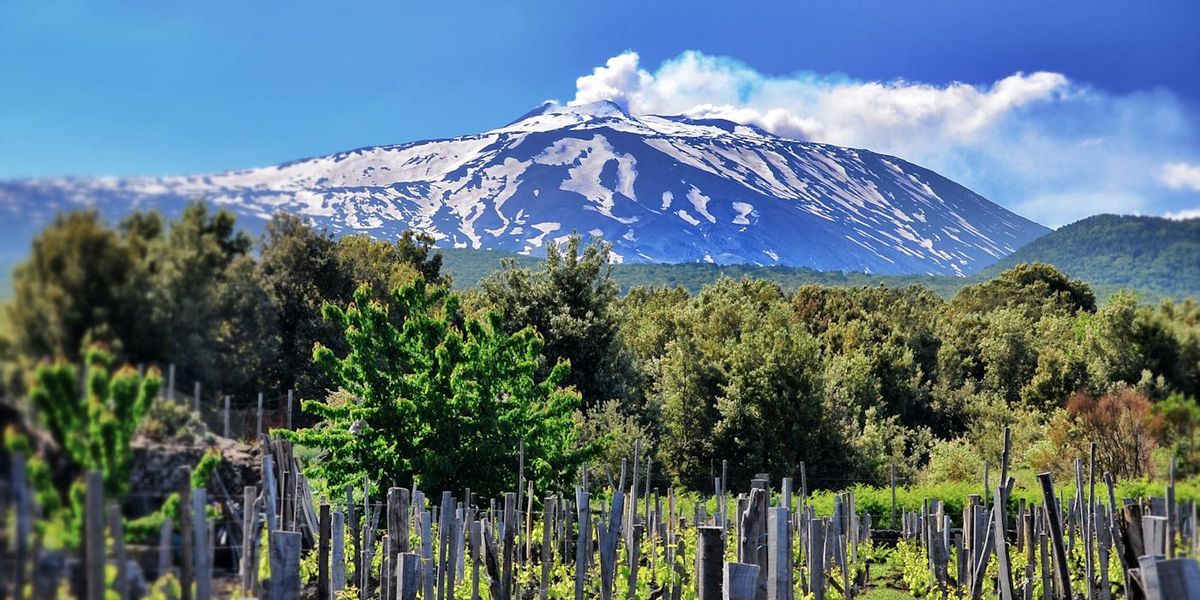
The Italian Etna DOC appellation is based on the territory on the slopes of Mount Etna, the 3330 meters high active volcano which dominates the north-eastern corner of Sicily. Etna DOC was the first to be created in Sicily, in August 1968. The most common type of Etna wine is Etna Rosso DOC, mainly produced with Nerello Mascalese grapes with the addition of up to 20% of Nerello Cappuccio (also known as Nerello Mantellato). Etna Bianco DOC is instead composed for at least 60% by Carricante grapes, to which is added Catarratto, the most common white grape of Sicily, and other grapes present in smaller quantities, such as Trebbiano and Minnella. There is also a rose wine based on Nerello Mascalese and Nerello Capuccio. The soils of the area start from the sea level and go up to more than 1200 meters (6200 feet). Etna's vineyards are now among the highest in Italy and of the world as well.
At the end of '700, under the Aragonese domination and then of the Bourbons, were born the first great Sicilian wineries, the Florios above all.
The reduction of the area planted with vines over the years is due to the frequent eruptions of Etna and to the objective difficulties of difficult viticulture, the so-called "heroic" one, where vineyards, because of the steep slopes, are mainly terraced and where cultivation operations are hardly mechanized and, therefore, involve very high costs.
However, despite these "difficulties", viticulture in Etna during the course of centuries has always maintained a role of very important cultivation for the territory, with the production of high-quality wines up to nowadays.
A unique soil: a marked climatic and soil variability, depending on the slope and the altimetry, defining varied environments, all in different ways favorable to a high quality of wine production. The nature of the soil is closely linked to the volcanic matrix; the soil was formed mainly by the accumulation and subsequent alteration of different eruptive materials such as ash, sand, lapilli and pumice.
Tasting notes
The most renowned variant is Etna Rosso, a wine having a splendid intense red color, with ruby red reflections and when aged slightly longer, almost tending to purple. Certainly very suggestive inside the glass.
To the nose, Etna Rosso wine is announced by an inebriating, intense and characteristic aroma. It certainly smells of red fruits, as well as slightly spicy. The most attentive ones will surely perceive hints of tobacco, as well as leather. The taste of this wine is just as expected: smooth, intense, full-bodied, in full harmony with its land.
Food Pairing
As for alcohol, it is a pretty important wine, it is about twelve and a half degrees and it is good to match it with robust and tasty food. It is therefore good to support the tasting of this wine by matching it with a first course seasoned with an important, tasty and savory meat sauce. Certainly, the local cooking offers many possibilities of choice.







